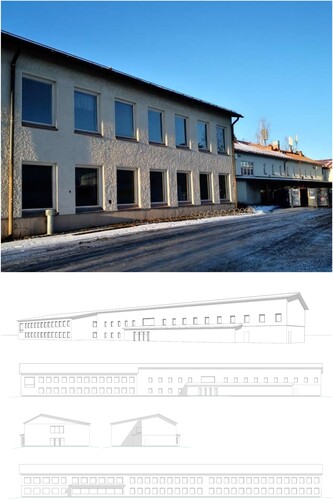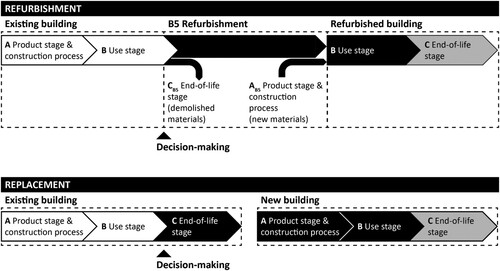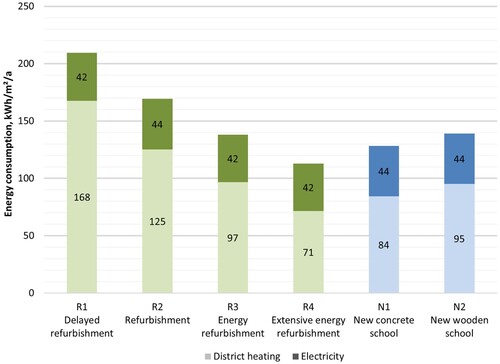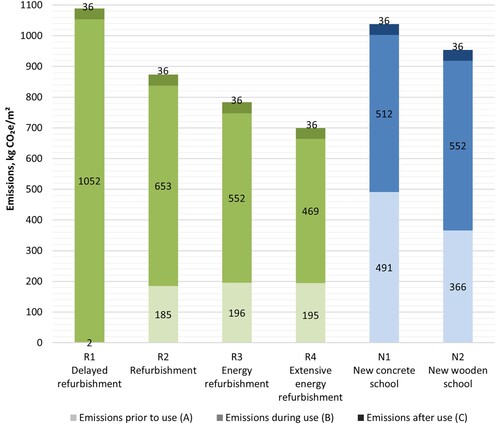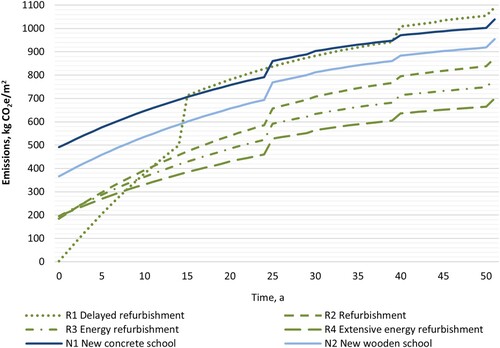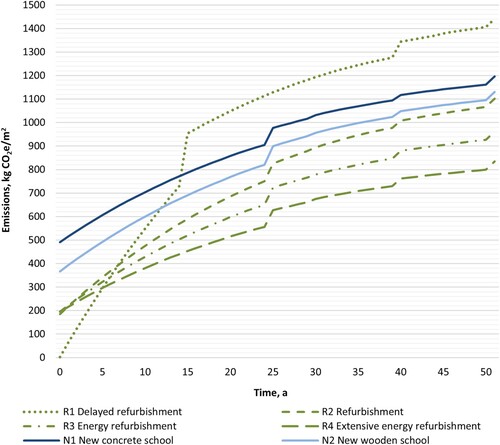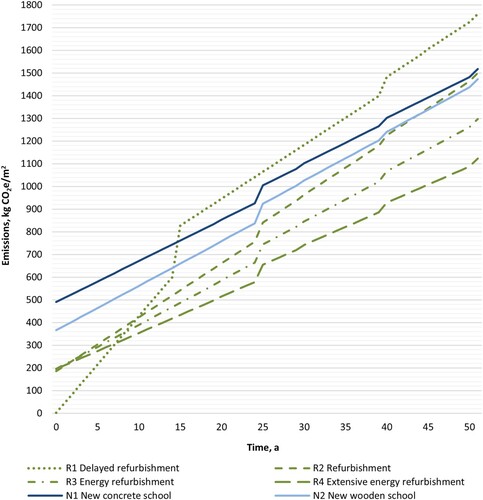Figures & data
Table 1. Structures used in the scenarios.
Table 2. Input data for energy calculation.
Figure 5. Life cycle phases, data sources and tabulated values used. Notes: A5 or C values are not available for refurbishment works in the MoE method. Thus, the method’s A5 value for new construction was used for R2–R4. This is likely an exaggeration, so it was assumed that the value compensates for CB5 as well, and a value for CB5 was not estimated separately.
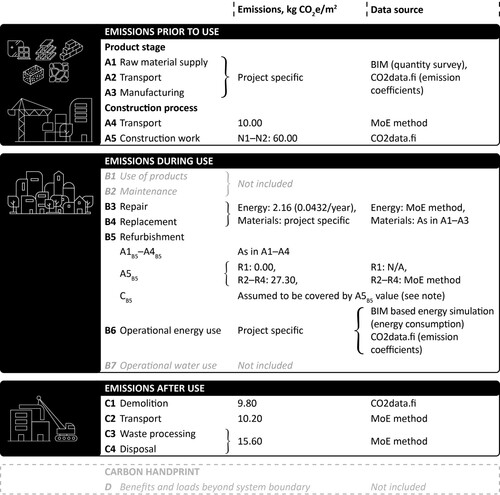
Input_data
Download MS Excel (68.3 KB)Data availability statement
The data that support the findings of this study are available in the tables and figures of the article, the supplementary data file, and Open Access sources (emissions coefficients and tabulated values in the MoE method or the CO2data.fi database).

